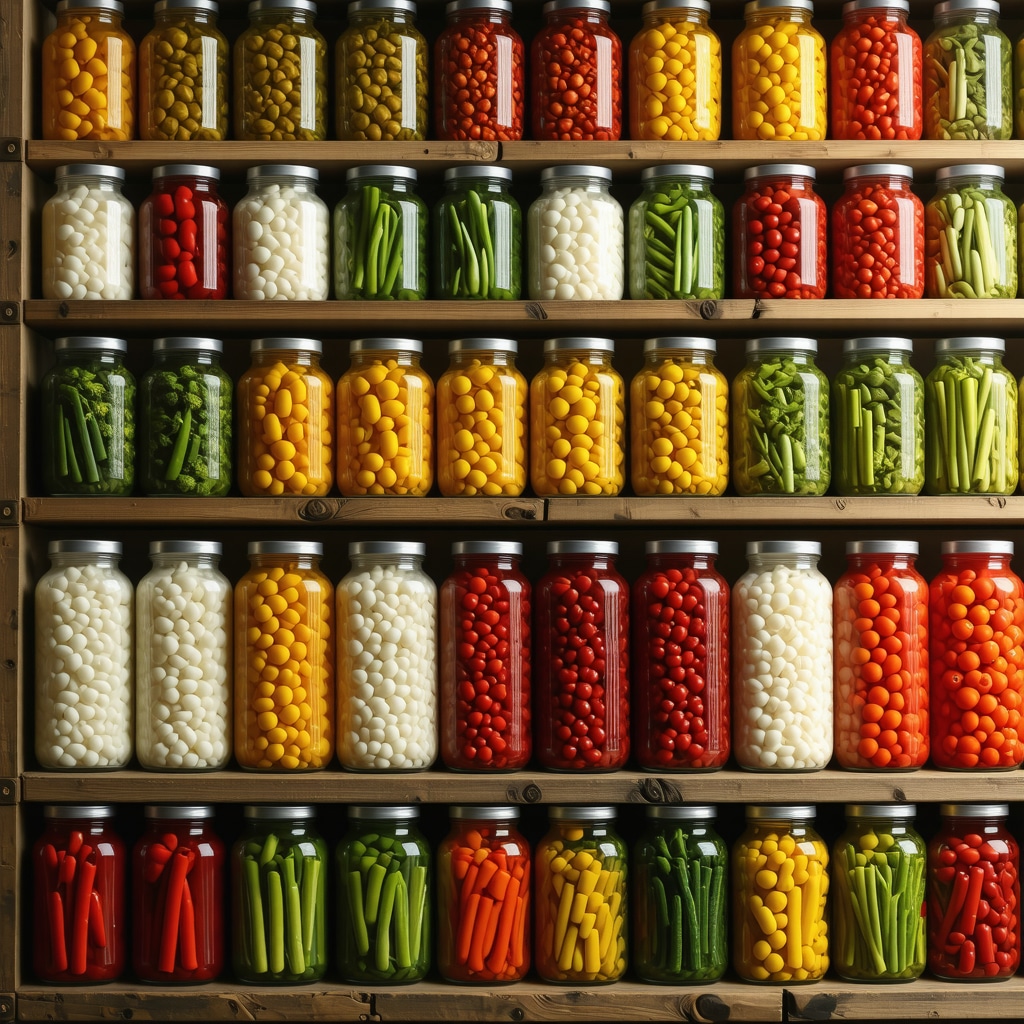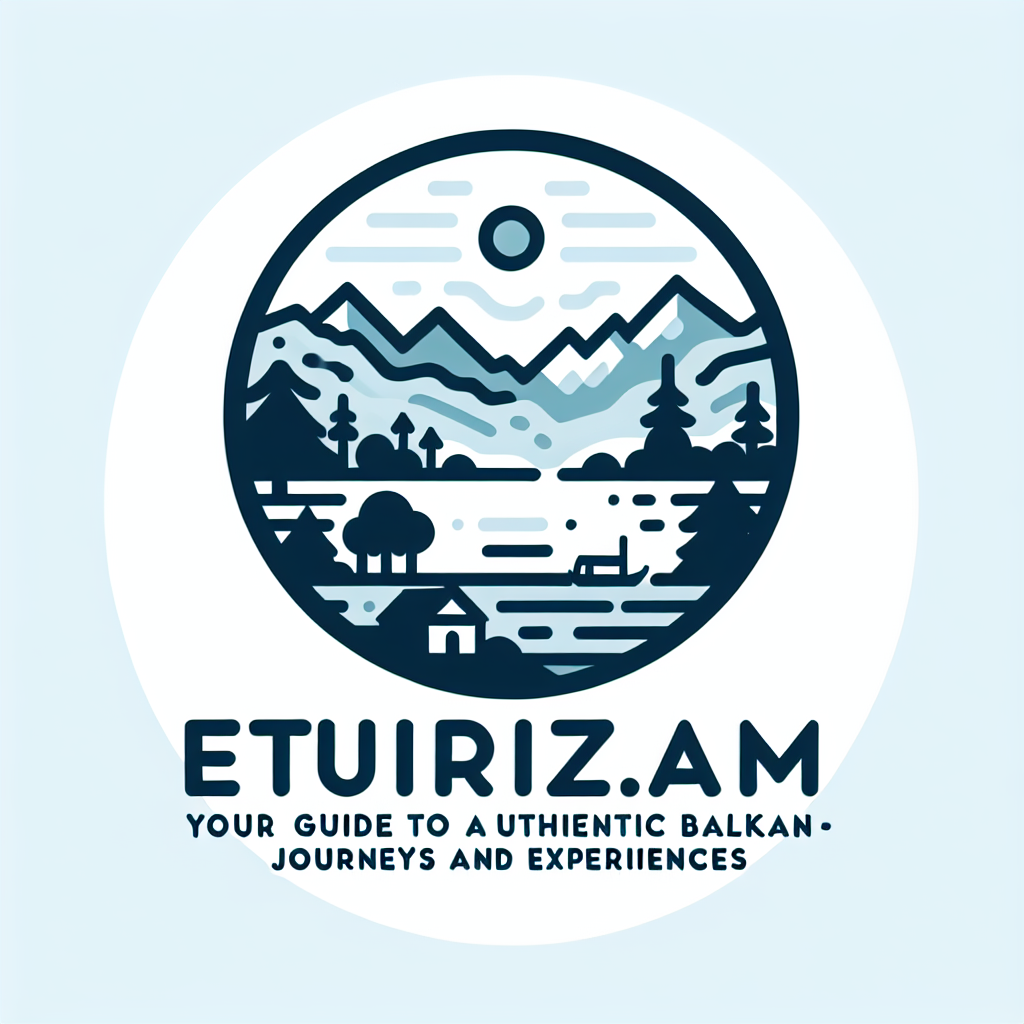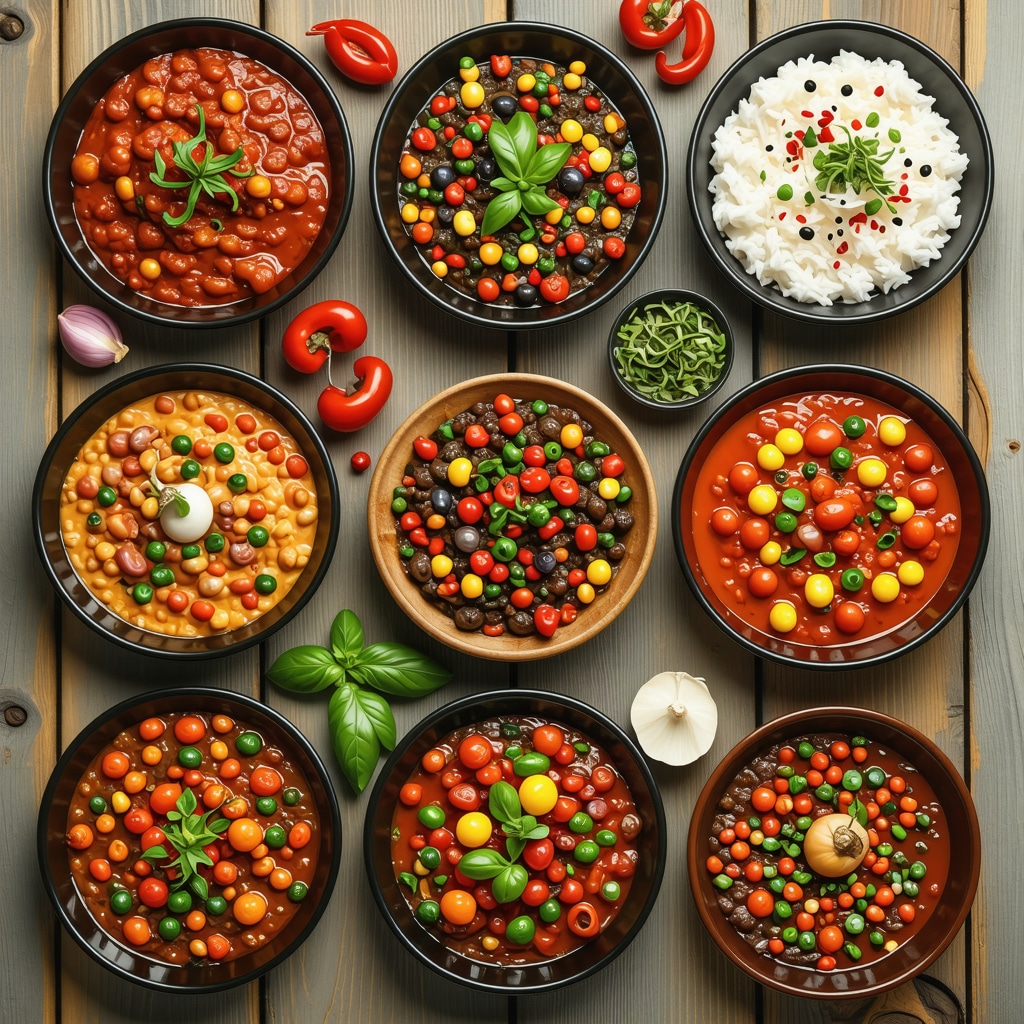Hapur në Shijet Autentike të Tekirdağut
Tekirdağ, një qytet bregdetar në Turqinë e Evropës, është më shumë se një destinacion historik dhe natyror; ai është një thesare e vërtetë e gastronomisë tradicionale turke. Zbulimi i gjellëve tradicionale në Tekirdağ është një udhëtim i pasur në kulturën dhe historinë lokale, ku çdo pjatë tregon një histori unike dhe një stil jete të veçantë. Për ata që kërkojnë të eksplorojnë më shumë se thjesht pamjet e bukura, ushqimi lokal i këtij qyteti ofron një eksperiencë të pashlyeshme.
Shijet e Veçanta që Definojnë Tekirdağun
Një nga gjellët më ikonike të Tekirdağut është Tekirdağ Köfte, qofte të përgatitura me një recetë tradicionale që kombinon mish të freskët dhe erëza lokale, duke krijuar një shije të pasur dhe të thellë. Kjo pjatë ka fituar famë për shijen e saj autentike dhe është një simbol i ushqimit lokal. Përveç qofteve, peshku i freskët nga Deti Marmara ofron mundësi të shumta për t’u shijuar, duke reflektuar lidhjen e fortë të qytetit me detin.
Si ndikojnë traditat lokale në gatimet e Tekirdağut?
Traditat e Tekirdağut janë thelbësore për mënyrën e gatimit dhe përbërësit që përdoren. Ushqimet janë shpesh të përgatitura me përbërës vendas, të mbledhur nga fermat dhe deti përreth, duke siguruar freski dhe cilësi të lartë. Për shembull, përdorimi i vajit të ullirit të prodhuar në zonën lokale dhe erëzave të freskëta është një praktikë e zakonshme që i jep gjellëve një karakter unik. Kjo lidhje e ngushtë me natyrën dhe traditat e kaluara ruhet me kujdes nga kuzhinierët lokalë, duke ofruar një përvojë autentike kulinare.
Recetat e Trashëguara dhe Ritet e Shijes
Një tjetër aspekt që e bën gatimin në Tekirdağ të veçantë është rëndësia e recetave të trashëguara nga brezi në brez. Për shembull, Hoşmerim, një ëmbëlsirë tradicionale që përgatitet me djathë, sheqer dhe vezë, është më shumë se një pjatë — është një ritual i shijes që lidh familjet dhe komunitetet lokale. Këto receta jo vetëm që ruajnë shijen origjinale, por edhe historinë e qytetit dhe identitetin kulturor.
Eksploroni më shumë rreth Turqisë së Evropës
Për të zgjeruar njohuritë tuaja mbi traditat dhe kulturën e rajonit, mund të vizitoni udhëzues të thelluara si Eksplorimi i Gjirit Ballkanik: Greqi, Kosovë dhe Turqi, ku përfshihen edhe elementë të kulturës gastronomike të zonës.
Zbuloni më shumë dhe ndani përvojën tuaj!
Nëse keni pasur rastin të shijoni gjellët tradicionale të Tekirdağut, ju ftojmë të ndani përvojat tuaja në komentet më poshtë. Ndani këtë artikull me miqtë tuaj që duan të eksplorojnë gastronominë autentike turke dhe vazhdoni të zbuloni më shumë destinacione të pasura me tradita në rajon.
Tekirdağ’s Culinary Traditions: Beyond the Plate
Understanding Tekirdağ’s cuisine requires delving into the socio-cultural fabric that shapes it. The culinary practices here are deeply intertwined with seasonal cycles, religious observances, and communal gatherings. For instance, many traditional dishes are prepared during specific festivals or family events, reflecting the rhythms of local life. This dynamic process ensures that the recipes are not static but evolve subtly while preserving their core authenticity.
How do seasonal and cultural nuances shape Tekirdağ’s gastronomy?
The seasons dictate the availability of fresh ingredients, which directly impacts the menu offered in households and restaurants. Spring and summer bring an abundance of fresh vegetables, herbs, and seafood from the Marmara Sea, leading to lighter, fresher dishes. Autumn and winter emphasize hearty stews and preserved foods, highlighting the region’s ingenuity in food conservation techniques such as pickling and curing. Beyond ingredients, cultural factors such as religious fasting periods influence the preparation methods and ingredient choices, emphasizing plant-based and seafood dishes during these times.
Moreover, communal cooking in Tekirdağ often involves traditional methods like using stone ovens or open fire grills, which impart distinctive flavors that modern appliances cannot replicate. These methods, passed down through generations, emphasize patience and skill, enriching the dining experience.
The Role of Local Ingredients in Authentic Tekirdağ Flavors
Tekirdağ’s geographic position along the Marmara Sea and its fertile plains provide a unique palette of ingredients. Olive groves spanning the region produce high-quality olive oil, a cornerstone of local cooking. The use of Tekirdağ olives and their oil is emblematic of the area’s agricultural heritage and imparts a peppery, fruity note that defines many dishes.
Additionally, the Marmara Sea offers an array of seafood such as anchovies, mussels, and sea bass, which are staples in the local diet. The freshness is paramount, often resulting in simple preparations that highlight the natural flavors. Similarly, the nearby vineyards contribute to the region’s famed Tekirdağ wine, which complements the culinary offerings and reflects the terroir of this unique locale.
Preserving Culinary Heritage Amidst Modernization
As globalization influences food markets and tastes, Tekirdağ faces the challenge of maintaining its culinary identity. Local chefs and food artisans play a crucial role in this preservation by balancing tradition with innovation. For example, some restaurants reinterpret classic dishes like Tekirdağ Köfte with contemporary plating and novel ingredient pairings while respecting the original flavors.
Community initiatives and culinary festivals also foster awareness and pride in the local gastronomy. These events not only attract tourism but also engage younger generations in learning and valuing their heritage. According to the Turkish Ministry of Culture and Tourism, such efforts have been pivotal in sustaining regional food traditions amid rapid urbanization (source).
Exploring Further: Connecting Tekirdağ’s Gastronomy with Regional Cultures
For readers interested in a broader perspective, exploring neighboring regions reveals fascinating overlaps and distinctions in culinary traditions. The Balkans and Southeastern Europe share historical ties that manifest in shared dishes and cooking techniques, yet each locale adds its own twist. Resources such as Explorimi i Gjirit Ballkanik: Greqi, Kosovë dhe Turqi offer insightful guides to understanding these cultural intersections.
Join the Conversation: Share Your Tekirdağ Culinary Discoveries
Your experiences enrich the collective knowledge of Tekirdağ’s gastronomic landscape. Have you savored the traditional köfte or attended a local food festival? Share your stories, recipes, or questions in the comments below. Don’t forget to share this article with fellow food enthusiasts eager to uncover the authentic tastes of Turkey’s European coast and explore more about the region’s rich cultural heritage.
Mastering the Art of Traditional Cooking Techniques in Tekirdağ
Tekirdağ’s culinary heritage is not only a collection of recipes but also an embodiment of time-honored cooking techniques that require mastery and patience. Traditional methods such as slow roasting over wood fires, fermenting vegetables, and hand-shaping köfte represent a culinary craftsmanship passed down through generations. The slow roasting process, for instance, enhances flavors by caramelizing natural sugars and tenderizing meats, creating depth and complexity that modern quick-cooking methods cannot replicate.
Moreover, fermentation practices in Tekirdağ, particularly for pickles and dairy products, utilize natural microbial activity to develop unique textures and probiotic benefits. This artisanal approach to food preservation is a testament to the locals’ intimate understanding of natural processes and their commitment to sustainable culinary practices. These techniques also preserve nutritional value and enhance digestibility, aligning with contemporary interests in gut health.
How do traditional Tekirdağ fermentation methods influence modern culinary health trends?
Fermentation in Tekirdağ is deeply rooted in local culture, employing indigenous microbes to create products like yoğurt and pickled vegetables that are rich in probiotics. This traditional knowledge intersects with modern nutritional science, which increasingly recognizes the role of fermented foods in maintaining microbiome diversity and boosting immunity. The artisanal fermentation in Tekirdağ thus offers a natural laboratory for studying beneficial microbes and developing health-focused culinary innovations. Chefs and food scientists alike are exploring how these age-old methods can be adapted or scaled while maintaining their health benefits and authentic flavors.
Innovative Adaptations: Balancing Heritage with Contemporary Palates
While respecting tradition, Tekirdağ’s culinary scene is also embracing innovation. Modern chefs are experimenting by integrating global ingredients and techniques that complement, rather than overshadow, the local flavors. For example, contemporary plating styles enhance the visual appeal of classic dishes, making them more attractive to younger audiences and international visitors.
Additionally, adaptations such as incorporating plant-based proteins into traditional köfte or creating fusion desserts inspired by Hoşmerim demonstrate a dynamic culinary evolution. This balance between preservation and innovation is crucial for keeping the culinary heritage alive and relevant in a rapidly changing gastronomic landscape.
Tekirdağ Culinary Festivals: Platforms for Cultural Exchange and Preservation
Annual food festivals in Tekirdağ serve as vital platforms for celebrating and transmitting this rich culinary heritage. These events showcase local ingredients, traditional cooking demonstrations, and competitions that highlight expert skills. Moreover, they attract food historians, culinary students, and tourists interested in immersive gastronomic experiences, fostering cultural exchange and appreciation.
Such festivals also stimulate local economies and encourage sustainable tourism, reinforcing the community’s connection to its culinary roots. By participating in these gatherings, attendees gain deeper insights into the socio-cultural dimensions of Tekirdağ cuisine beyond mere consumption.
Further Depth: Exploring Tekirdağ’s Culinary Influence on the Marmara Region
Tekirdağ’s gastronomy does not exist in isolation but is part of a larger culinary ecosystem within the Marmara Region. The interregional exchanges of ingredients, recipes, and cooking practices have created a vibrant culinary dialogue. Exploring these connections reveals how Tekirdağ has influenced and been influenced by neighboring locales, enriching the entire region’s gastronomic identity.
For a comprehensive understanding of such cross-regional culinary dynamics, authoritative studies like those published by the Turkish Culinary Research Institute provide invaluable insights into historical trade routes, migratory influences, and agricultural developments shaping the food culture.
Curious to delve deeper into Tekirdağ’s culinary mastery and its contemporary innovations? Continue exploring our expert articles and engage with our community of food historians and chefs to enrich your gastronomic journey.

Preservation Techniques: The Intersection of Tradition and Microbial Science
Tekirdağ’s culinary heritage is uniquely characterized by its sophisticated use of microbial fermentation and preservation methods that have withstood the test of time. These artisanal techniques not only create distinctive flavors and textures but also embody an early understanding of biochemical processes that modern science now validates. Fermented dairy products like yoğurt and fermented vegetables are produced using indigenous microbial cultures that contribute to their probiotic properties and nutritional depth, offering a compelling link between culinary tradition and contemporary health paradigms.
What scientific principles underpin Tekirdağ’s traditional fermentation methods and their health impacts?
Traditional fermentation in Tekirdağ harnesses lactic acid bacteria and yeasts indigenous to the environment, which metabolize sugars into organic acids, alcohols, and carbon dioxide. This biochemical transformation not only preserves food but enhances its digestibility and fortifies its nutritional profile by increasing bioavailability of vitamins and fostering gut microbiota diversity. Recent research in food microbiology corroborates these benefits, showing fermented foods as integral to immune modulation and metabolic health (NIH: Fermented Foods and Probiotics in Health). This empirical validation underscores how Tekirdağ’s culinary practices anticipate modern functional food concepts.
Adaptive Culinary Innovation: Melding Heritage with Modern Techniques
In the culinary landscape of Tekirdağ, innovation does not supplant tradition but rather synergizes with it. Contemporary chefs employ precision cooking techniques, such as sous-vide and controlled open-fire grilling, to refine textures and intensify flavors while preserving the authenticity of foundational recipes like Tekirdağ Köfte. Furthermore, experimental gastronomy is evident in the integration of plant-based proteins and heirloom grains, catering to evolving dietary preferences without compromising the cultural narrative.
This adaptive approach facilitates culinary sustainability by attracting a diverse demographic, including international gourmands and health-conscious diners, thus ensuring the legacy of Tekirdağ’s cuisine continues dynamically into the future.
Regional Culinary Networks: Tekirdağ’s Role in Marmara and Beyond
Tekirdağ functions as a pivotal node within an intricate network of culinary exchange that spans the Marmara region and adjacent Balkan territories. This cross-pollination is evident in shared ingredient utilization, such as olive oil and seafood, alongside divergent culinary expressions shaped by localized agricultural and cultural influences. Historical trade routes and migratory patterns have contributed to a layered gastronomic tapestry that contextualizes Tekirdağ’s cuisine within broader Eastern Mediterranean and Balkan food systems.
Authoritative analyses from the Turkish Culinary Research Institute elucidate these complex interactions, offering insight into how Tekirdağ’s gastronomic identity both influences and is influenced by regional dynamics, reinforcing the city’s significance as a culinary cultural bridge.
Engage with Tekirdağ’s Culinary Evolution
For culinary professionals, enthusiasts, and cultural scholars seeking to deepen their expertise, Tekirdağ offers a living laboratory of gastronomic tradition and innovation. Explore the nuanced interplay between microbial science and artisanal methods, the fusion of classic and modern culinary techniques, and the regional interconnectivity that frames Tekirdağ’s food culture.
We invite you to share your advanced insights, questions, or research findings about Tekirdağ’s gastronomy in the comments below. Join our community to partake in ongoing dialogues that celebrate and critically examine this vibrant culinary heritage.

Frequently Asked Questions (FAQ)
What makes Tekirdağ Köfte unique compared to other Turkish meatballs?
Tekirdağ Köfte is distinguished by its specific blend of fresh local meats, locally sourced spices, and traditional hand-shaping techniques that create a distinct texture and flavor profile. Its preparation involves a balance of simplicity and precision, often grilled over wood fires, which imparts a smoky aroma unique to the region.
How do seasonal ingredients influence Tekirdağ’s traditional dishes?
The availability of seasonal produce and seafood from the Marmara Sea shapes the menus throughout the year. Spring and summer emphasize fresh vegetables, herbs, and seafood, resulting in lighter dishes, while autumn and winter focus on hearty stews and preserved foods, reflecting time-honored methods of food conservation like pickling and curing.
In what ways do fermentation practices in Tekirdağ contribute to health and flavor?
Traditional fermentation harnesses indigenous lactic acid bacteria and yeasts to preserve foods such as yogurt and pickled vegetables. This process not only enhances flavors and textures but also boosts nutritional value and probiotic content, supporting gut health and immune function, aligning with modern nutritional science.
How are modern chefs innovating while preserving Tekirdağ’s culinary heritage?
Contemporary chefs integrate precision cooking techniques and global ingredients to reinterpret classic dishes without compromising authenticity. For example, they may use sous-vide methods for texture refinement or incorporate plant-based proteins in traditional köfte, thus appealing to modern palates while honoring tradition.
What role do culinary festivals play in Tekirdağ’s food culture?
Culinary festivals in Tekirdağ serve as cultural hubs that celebrate local ingredients, cooking techniques, and community heritage. They promote cultural exchange, stimulate sustainable tourism, and engage younger generations in preserving gastronomic traditions, thereby reinforcing the city’s culinary identity.
How does Tekirdağ’s gastronomy connect with broader regional cuisines?
Tekirdağ’s cuisine is part of a dynamic network within the Marmara region and the Balkans, sharing ingredients like olive oil and seafood while reflecting localized agricultural and cultural influences. These interregional exchanges enrich the culinary landscape and highlight historical trade and migratory patterns.
Why is preserving traditional cooking methods important in Tekirdağ?
Traditional methods such as slow roasting, open-fire grilling, and fermentation preserve unique flavors and nutritional qualities that modern equipment cannot replicate. These techniques embody cultural heritage and impart depth and authenticity to the cuisine, maintaining a tangible link to the past.
Can Tekirdağ’s culinary practices inform modern food sustainability?
Yes, Tekirdağ’s reliance on local, seasonal ingredients and artisanal preservation techniques exemplifies sustainable food practices. The integration of microbial fermentation and minimal processing aligns with contemporary interests in ecological responsibility and health-conscious eating.
How can visitors experience authentic Tekirdağ cuisine?
Visitors can savor authentic dishes by dining at local establishments that use traditional recipes and cooking methods, attending culinary festivals, and exploring markets offering fresh local produce and seafood. Engaging with community events and food artisans provides immersive cultural and gastronomic experiences.
What resources are recommended for deeper study of Tekirdağ’s gastronomy?
For in-depth exploration, scholarly publications, regional culinary institutes, and comprehensive guides on Balkan and Marmara cuisines offer extensive insights. Participating in cultural exchanges and culinary workshops in Tekirdağ also deepens understanding of the local food heritage.
Trusted External Sources
- Turkish Ministry of Culture and Tourism – Provides authoritative information on the promotion and preservation of Turkish regional gastronomy, including culinary heritage programs and festivals in Tekirdağ.
- National Institutes of Health (NIH) – Fermented Foods and Probiotics Research – Offers scientific validation of traditional fermentation practices and their health impacts, relevant to Tekirdağ’s probiotic-rich foods.
- Turkish Culinary Research Institute – Conducts comprehensive studies on regional food systems, historical trade influences, and agricultural practices shaping Tekirdağ’s and Marmara’s culinary identities.
- Regional Cultural Guides: “Eksplorimi i Gjirit Ballkanik” – Explores the interconnected culinary traditions of the Balkans and Turkey, providing context for Tekirdağ’s gastronomic influences and regional relationships.
- Academic Journals on Food Microbiology and Ethnography – Publish research on artisanal preservation techniques and cultural gastronomy, relevant for understanding Tekirdağ’s traditional methods and innovation.
Conclusion
Tekirdağ’s culinary landscape is a vibrant confluence of tradition, innovation, and regional interplay. Rooted in time-honored recipes like Tekirdağ Köfte and Hoşmerim, its gastronomy reflects an enduring connection to local ingredients, seasonal rhythms, and artisanal techniques such as fermentation and slow roasting. Contemporary chefs and community initiatives skillfully balance preservation with adaptation, ensuring these flavors and practices remain dynamic and relevant. Positioned within the broader Marmara and Balkan networks, Tekirdağ’s cuisine exemplifies cultural resilience and gastronomic richness. By engaging with this heritage—whether through dining, festivals, or scholarly exploration—readers and food enthusiasts can appreciate the profound narratives embedded in every dish. We invite you to share your experiences, explore further expert content, and celebrate the authentic tastes of Tekirdağ’s culinary tradition.

